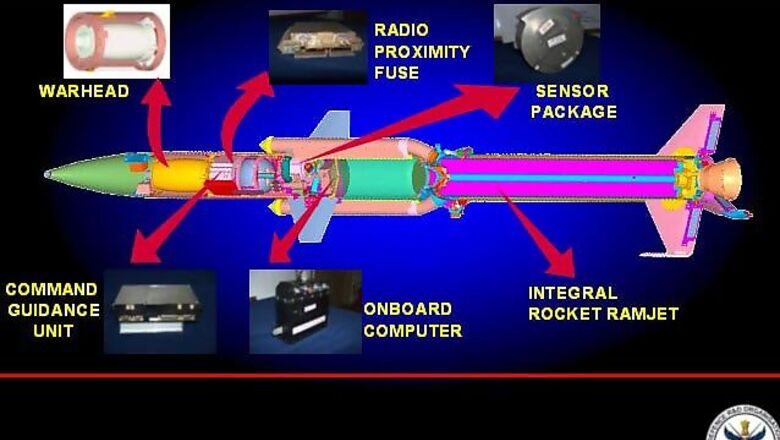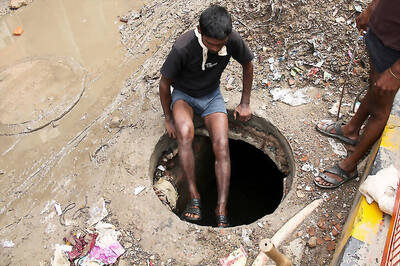
views
New Delhi: India has finally got a formidable and indigenous anti-aircraft missile system with the handing over of the surface-to-air (SAM) Akash to the Indian Army on Tuesday.
Developed by the Defence Research and Development Organisation (DRDO), Akash, which can be fired from both static and mobile platforms, is an all weather area air defence weapon system for defending vulnerable areas against medium range air targets penetrating from low, medium and high altitudes.
The missile system, indigenously developed as part of the integrated guided-missile development programme (IGMDP), will replace Russian weaponry some of which have been with the Army for almost 50 years and are obsolete.
Akash is designed to neutralise multiple aerial targets attacking from several directions simultaneously. Only a handful of countries other than India have a SAM system which can engage multiple targets. These are the United States of America, Russia, a few European nations, Israel and Japan.
The supersonic Akash SAM has a range of about 25 km and carries a 55 kg fragmentation warhead that is triggered by proximity fuse. The missile uses state-of-art integral ram jet rocket propulsion system and the onboard digital autopilot ensures stability and control. The missile has all the way command guidance for full range of operation.
Every Akash system has four 3D passive electronically scanned array (PESA) radars and four self-propelled launchers with three missiles each, all of which are interconnected.
Electro-pneumatic servo actuation system controls cruciform wings for agile response, and thermal batteries provide onboard power supply. The Radio Proximity Fuse has advanced signal processing features. Together with the pre-fragmented warhead and safety arming mechanism, the missile has a high kill probability of manoeuvring targets.
Akash's heart is the Battery Level Radar (BLR), known as Rajendra, which tracks the targets and missiles and guides the missiles towards the targets. The multifunction phased array radar can simultaneously track upto 64 targets. In addition it can guide eight missiles towards four targets at the same time.
Electronically steered beams enable agility in switching between various functions of the radar. It has a slewing antenna which enables 360 degree coverage and has been designed with advanced Electronic Counter Countermeasures (ECCM) features.
Akash missile system is autonomous and its operation is fully automated. The system is configured to be cross country mobile on tracked chasses for the Army or road mobile on Tatra chasses which provides flexibility in deployment.
These missiles will not only protect military installations but also provide cover to important civilian targets like dams, nuclear power plants, government offices, big factories, bridges etc in the event of a war.
According to DRDO Akash missile system consists of a network of radars and control centres which enables it to work in a network centric manner. It also enables robust and reliable operations, as data from multiple sensors are fused into a coherent single integrated air picture for the commander who will give the order to fire,
The system can also integrate legacy and futuristic radars. Computers process information from several radars and also help in automatically classifying the targets as friendly or otherwise. The system also provides for cued acquisition of multiple targets by weapon control radar based on data from surveillance radars.
In keeping with demands of a futuristic war, the system has advanced battlefield management software, which carries out relative threat computation and pairing of targets and missiles. It also enables fire control decisions such as direction of missile launch, number of missiles to be launched and instant of missile launch.
The system also helps to assign specific launchers and missiles and monitors the health of the various combat elements and reports them to the war fighter. The control centre provides fire request cue to the commander at the earliest instant ensuring high kill probability. The system has inbuilt simulation facility as well as self-testing before clearing the missile for launch.
The communication between various elements of the weapon system is provided by frequency hopping secure RF links. The system can operate in a totally automated hands free operation mode from target detection to kill.



















Comments
0 comment